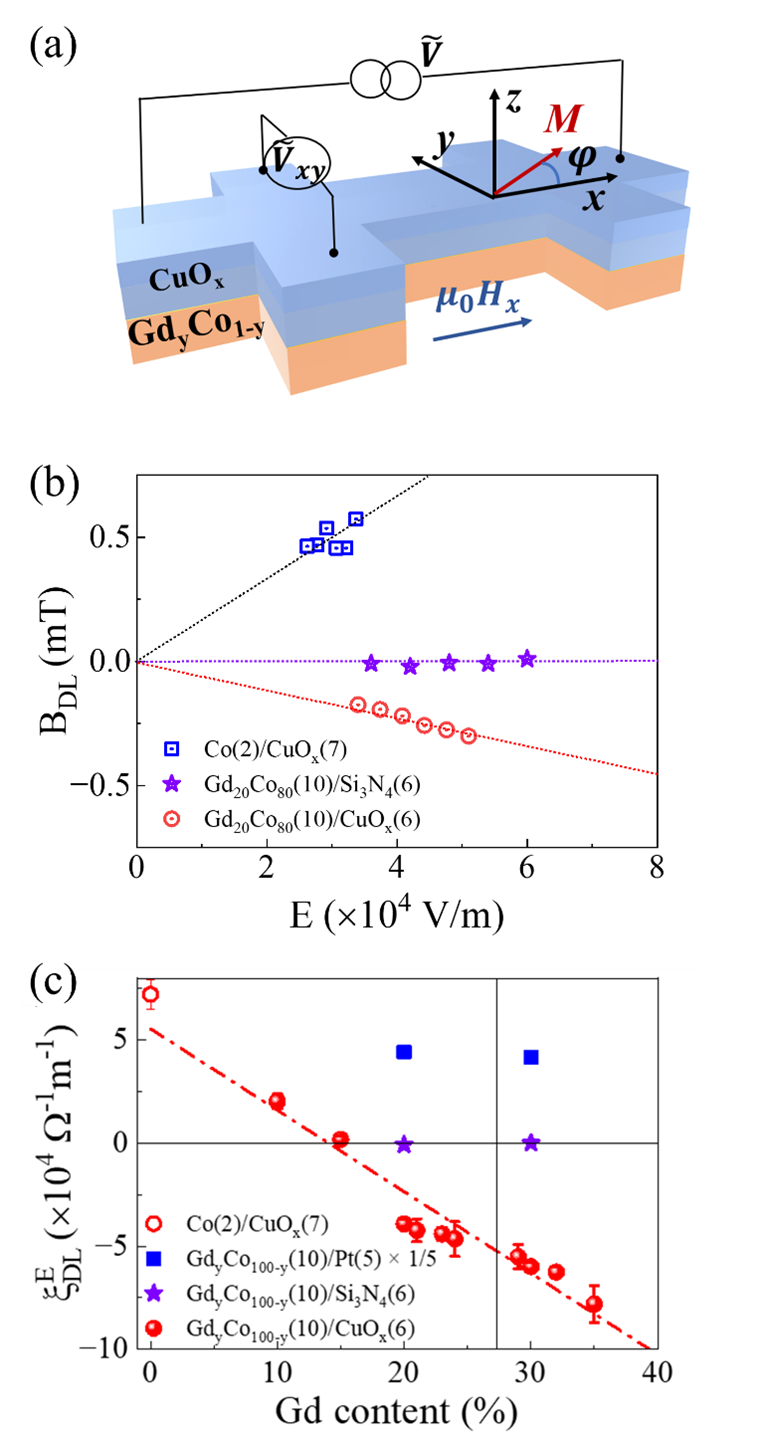Orbital-to-spin conversion in transition-metal rare-earth alloys
Ultrafast switching of ferrimagnetic order by an electric current reveals unexpected transient magnetic states that shed light on the sublattice magnetization dynamics in space and time.
The possibility to generate nonequilibrium orbital currents and convert them into spin-orbital torques has generated enormous attention in the field of spintronics. Open fundamental questions concern the nature of the orbital current in different material systems and the mechanisms that allow for its conversion into a spin current. On the practical side, the efficient generation of so-called orbital torques, namely spin torques originating from an orbital current, opens up many new opportunities for manipulating the magnetization in material systems that are both widely available and compatible with mainstream deposition processes, such as the 3d transition metals.
Whereas recent works have focused on orbital current in ferromagnets such as Fe, Co, and Ni, the interaction between an orbital current and a ferrimagnetic alloy has not been studied thus far. The interesting point in the latter case is the presence of magnetic elements that belong to the 3d transition-metal group and rare-earth 4f group, which have different spin-orbit coupling signs and strengths. Our manuscript reports the first investigation of current-induced torque in a ferrimagnetic thin film via orbital current injection and the first insights into the orbital-to-spin conversion in ferrimagnetic systems. The main results are summarized below.

We show that an electric current flowing in a GdyCo1-y/CuOx bilayer generates a significant orbital torque due to the orbital Rashba-Edelstein effect in CuOx, as opposed to the spin torque generated in a GdyCo1-y/Pt bilayer by the spin Hall effect in Pt. Starting from this premise, we demonstrate that the orbital torque in a ferrimagnetic GdyCo1-y/CuOx bilayer is negative compared to the orbital torque in a ferromagnetic Co/CuOx bilayer owing to the highly efficient orbital-to-spin conversion via the spin-orbit coupled orbitals of Gd. Further, the magnitude of the torque can be continuously tuned by changing the amount of Gd atoms in GdyCo1-y, providing a handle to the orbital torque efficiency in an important class of materials. Finally, we show that lowering the temperature results in a manifold increase of the orbital torque efficiency, which we ascribe to the increased degree of magnetic order in the Gd sublattice and its effect on orbital-to-spin conversion.
Our work provides a microscopic understanding into the processes that induce orbital angular momentum transfer from the conduction electrons to the local magnetization. Furthermore, the efficient tuning of the orbital torque efficiency in rare-earth transition-metal alloys bears on the development of ferrimagnetic spin-orbitronic devices, which are currently of great interest because of their high-speed and versatile magnetic properties.
Selected publications
Orbital Torque in Rare-Earth Transition-Metal Ferrimagnets, S. Ding, M.-G. Kang, W. Legrand, and P. Gambardella, Phys. Rev. Lett. 132, 236702 (2024). Downloadarticle (PDF, 707 KB)vertical_align_bottom, Downloadsupplementary information (PDF, 1.1 MB)vertical_align_bottom
